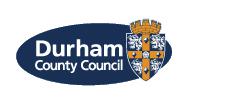Properties of 2D shapes (Years 7-9)
The following resources are aimed at early Key Stage 3. Resources are sufficient for about 5 lessons.
The first resources, "Numerically Equal" and "Chain of Changes", provide excellent starters for reminding pupils of the basic properties of shapes they should already know (rectangles, squares, circles and triangles).
The rest can be used as main activities and descriptions of how to use them and how they fit into lesson are contained under each resource.
Numerically Equal
A short task that looks at the properties of a square, mainly length, area and perimeter.
Chain of Changes
A nice task that helps pupils make the connection between various shapes.
Make a rectangle
"Making Rectangles" is a good task for encouraging rich forms of comunication and team work, and an effective plenary/discussion afterwards could lead to in-depth discussion on the properties of these shapes, as well as some target setting regarding how to work efficiently when using the next resource, "Properties of a Shape Mystery".
Properties of Shape Mystery
Using "Properties of Shapes Mystery" shortly after the "Making Rectangles" allows pupils to set themselves a target from the "Making Rectangles" lesson, and then work on this during this activity. Assigning a certain number of questions to each group ("groups are only allowed to ask me 5 questions") will allow them to carefully consider what information they need to obtain from you. Alternatively, you could asign roles withing the groups, so only one person is allowed to approach other teams or the teacher with a questions. (ie "What kind of shape as an infinite number of lines of symmetry?").
Preparing a PPT or Notebook for this lesson with some hints is advised for some classes, and the answer sheet is provided to help with this.
An effective penary can be put in place where pupils write down a certain number of facts that they have learnt that they want to remember for the future, and also comment on whether they met their target from the start/previous lesson.
What is a Kite
"Kite Maths" is a fun way of exploring the properties of a Kite, and the challenges included could be rewarded with points/merits/prizes depending on your school. A good way for pupils to spend the second half of the lesson is to distil the knowledge they have aquired by making a set of instructions on a poster as to how to make a kite. Encouraging them to include important properties and mistakes to avoid will allow the definitions to work into the long term memory.
There are other versions of this activity to do with other shapes, and these can be found on the maths300 website, although a subscription is needed for the site.
Dissecting a Square SS3
"Disecting a Square" brings in Fractions and Percentages and forces pupils to give justified reasons for any decisions. It would be best to start this lesson with the "Numerically Equal" starter, and then move onto this.
Once the idea has been introduced, pupils can seperate into pairs and challenge each other to disect the squares in various ways and check each other's work.
Classifying Shapes SS1
The "Classifying Shapes" resources can be heavily altered, depending on whether you wish to examine symmetry, rotation, numbers of edges or different shapes.
"Chain of Changes" would be a good starter for this activity. After this, display shapes on board and have pupils draw these shapes into the correct column/row. After they have done this you could give certian shapes with definitions on your board, and pupils have to pick which of their shapes in the tables best suits this definition. They have done all the hard work by this point, it is just a matter of looking at their table and picking the correct one.
A final dicussion is important, as some shapes may well have a few possabilities, and it is important for pupils to see this. For instance; A square is a type of rhombus, but this is rarely highlighted. Through this lesson, this fact may come about, and they may remember the properties of a rhombus much better for the future.


